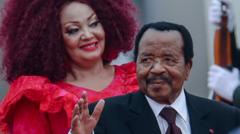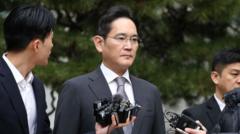This article delves into the complexities of Hollywood rivalries, the dark arts of public relations, and how social media has transformed the landscape of celebrity disputes.
The Hidden Battle: Unmasking Hollywood’s Publicity Smear Tactics

The Hidden Battle: Unmasking Hollywood’s Publicity Smear Tactics
Explore the emerging dynamics of celebrity conflicts and the PR machinery that seeks to shape them.
The actress Joan Crawford once remarked on her rival Bette Davis, saying, “She’s a phony, but I guess the public likes that.” This epitomizes the tumultuous, interwoven world of celebrity feuds that have long captured the public's imagination. While historical spats like their notorious animosity were played out in the tabloids of yesteryear, contemporary rivalries are often sealed behind closed doors—though a recent public conflict between Blake Lively and Justin Baldoni has changed that dynamic, capturing headlines and drawing attention to the underlying publicity machine in Hollywood.
Their feud, which erupted during the production of the film "It Ends With Us," has escalated into a legal confrontation with each accusing the other of conducting a smear campaign. Lively has alleged harassment on set and claims Baldoni retaliated through a disinformation strategy. Baldoni, for his part, accuses Lively and her team of attempting to undermine his role in the project. The nature of this case reveals just how far the star-studded glamour masks the chaos lurking just below the surface of film sets.
As this public dispute unfolded, it became clear that both actors had enlisted crisis PR experts to influence the narrative surrounding them. Legal representatives from Lively discovered dubious communications between Baldoni’s publicist and his crisis management team, further highlighting the orchestrated maneuvers present in celebrity squabbles. Reports that Baldoni’s aide suggested they could “bury anyone” accentuate the powerful and sometimes manipulative techniques within the realm of Hollywood public relations.
While overt conflicts like the recent feud capture attention, the intricacies of Hollywood’s communication strategies typically operate behind the scenes. Richard Rushfield, a Hollywood newsletter founder, highlights that the film industry is often rife with tensions, feelings, and alliances that spiral into dramatic conflicts. These backstories are generally kept out of the limelight as the industry is deeply committed to managing the narrative surrounding its stars.
Crucially, social media has introduced a complicating factor into this PR game. With celebrities now able to communicate directly with fans, the once-charmed distance between icons and the public has dissolved. In this digital age, PR experts face a more daunting challenge than ever before. Daniel Bee, a seasoned publicist, notes that social media has turned the promotional landscape into an untraceable arena where misinformation can thrive alongside genuine public sentiments, making it harder to manipulate outcomes.
The modern uproar is rife with what some call “PR voodoo”—covert tactics employed to manage public perception. Through methods like astroturfing, organized campaigns can masquerade as grassroot movements, swaying public sentiment without disclosing the orchestrating forces behind them. Carla Speight, founder of PR Mastery, describes it as a calculated game of chess designed to manipulate outcomes subtly.
A historical perspective on smear campaigns shows that while tactics have evolved, the core principles have not changed. For years, publicists have worked silently to prevent damaging information from surfacing, whispering narratives to influential journalists long before social media's rise. In an era of tightening scrutiny, audiences have cultivated a more discerning eye regarding media consumption, posing new hurdles for publicists. However, industry insiders like Eriq Gardner caution that the public may still lack the skepticism needed to dissect layered marketing narratives.
Making matters more complex is the relationship between advertising dollars and media that create a delicate dance where studios often dictate the flow of information. In this tangled web, major publications are sometimes reticent to publish stories damaging to the studios financing their operations. The pricing power of platforms like The New York Times proves essential in revealing truths about Hollywood’s hidden machinations that others may shy away from due to financial ties.
As the outcomes of Lively and Baldoni’s lawsuits remain uncertain, the fact that their conflict has become public underscores the fragility of Hollywood's otherwise polished reputation. The nature of celebrity has shifted significantly, inviting a dual-channel of communication that simultaneously engages and critiques. While the appetite for a peek behind the curtain persists, the evolving fabric of stardom ensures that not all stories compartmentalized in smoke and mirrors will have the same resonance in the public’s consciousness. However, the intricate publicity games suggest that Hollywood’s drama will continue unabated, viewed with both fascination and critical insight.


















